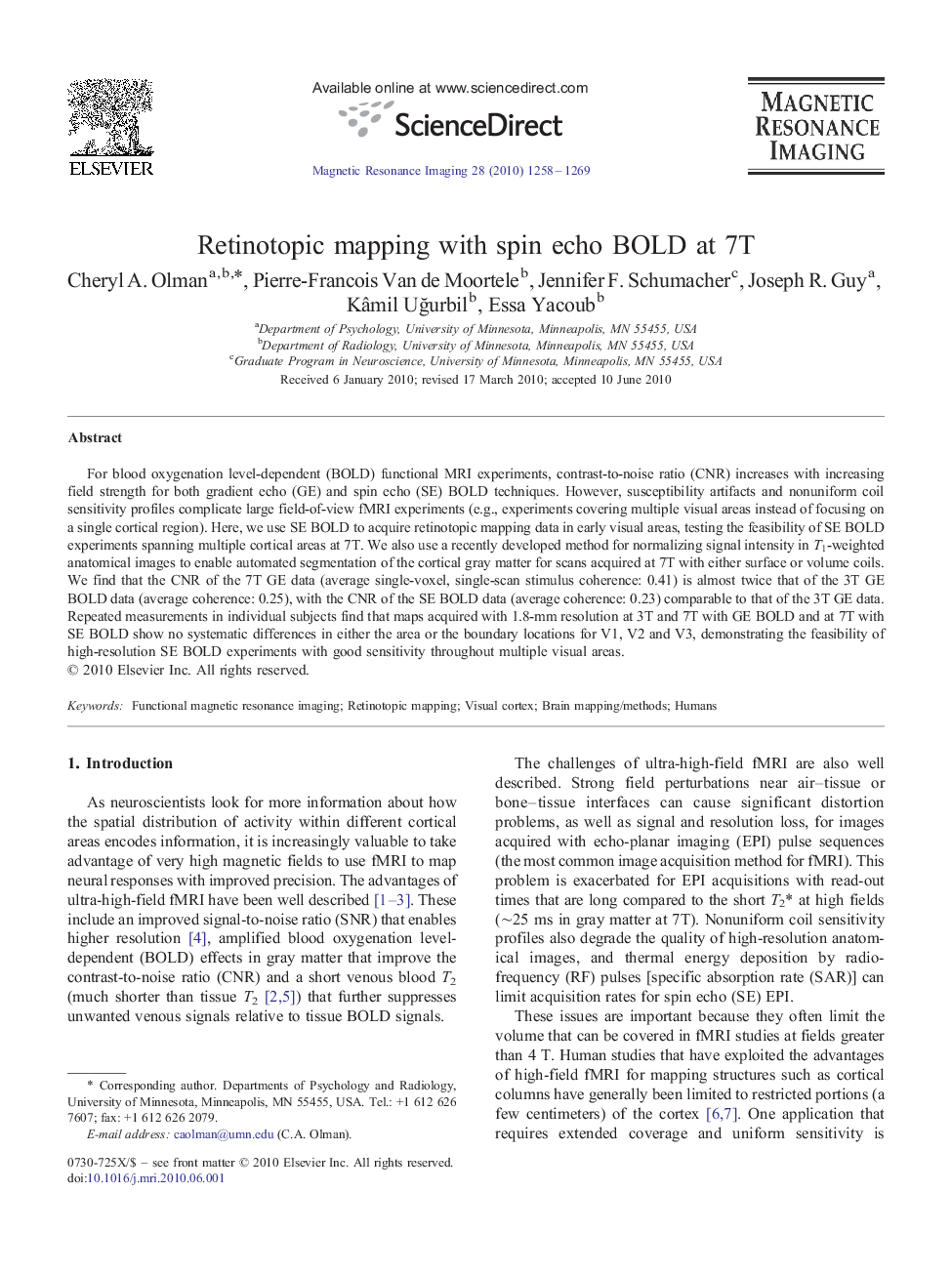| Article ID | Journal | Published Year | Pages | File Type |
|---|---|---|---|---|
| 1806992 | Magnetic Resonance Imaging | 2010 | 12 Pages |
For blood oxygenation level-dependent (BOLD) functional MRI experiments, contrast-to-noise ratio (CNR) increases with increasing field strength for both gradient echo (GE) and spin echo (SE) BOLD techniques. However, susceptibility artifacts and nonuniform coil sensitivity profiles complicate large field-of-view fMRI experiments (e.g., experiments covering multiple visual areas instead of focusing on a single cortical region). Here, we use SE BOLD to acquire retinotopic mapping data in early visual areas, testing the feasibility of SE BOLD experiments spanning multiple cortical areas at 7T. We also use a recently developed method for normalizing signal intensity in T1-weighted anatomical images to enable automated segmentation of the cortical gray matter for scans acquired at 7T with either surface or volume coils. We find that the CNR of the 7T GE data (average single-voxel, single-scan stimulus coherence: 0.41) is almost twice that of the 3T GE BOLD data (average coherence: 0.25), with the CNR of the SE BOLD data (average coherence: 0.23) comparable to that of the 3T GE data. Repeated measurements in individual subjects find that maps acquired with 1.8-mm resolution at 3T and 7T with GE BOLD and at 7T with SE BOLD show no systematic differences in either the area or the boundary locations for V1, V2 and V3, demonstrating the feasibility of high-resolution SE BOLD experiments with good sensitivity throughout multiple visual areas.
